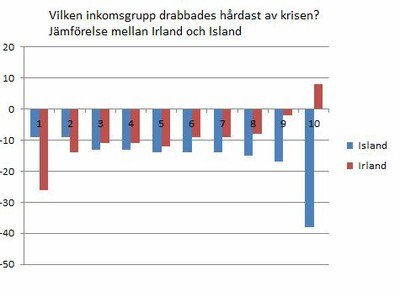Iceland's Welfare Watch cushioned the crisis and led to stronger Nordic cooperation
The Finnish programme for Nordic cooperation aims to secure welfare by extending cooperation between different government departments and organisations. But can it be done? Iceland’s Welfare Watch is one of the best examples of an innovative way to cooperate.
The Nordic Labour Journal has previously written about how the Welfare Watch came to be and the role it played during the economic crisis which hit Iceland harder than other countries in 2008. A group of 35 people were tasked to warn authorities if various social groups were falling outside of the welfare system, and to come up with ideas for what could be done to prevent it from happening.
No foreign model
Director of the Welfare Watch, Siv Friðleifsdóttir, presented the project at the Turku kick-off conference, and she could find praise from several quarters. Researchers from the University of Iceland have assessed the Welfare Watch’s work. Iceland’s Minister of Social Affairs, Eygló Harðardóttir, has written this in the preface to the evaluation:
“The Welfare Watch has no direct foreign model to base itself on and can therefore be considered a powerful and successful example of innovation that we Icelanders can be proud of.”
Siv Friðleifsdóttir also pointed to how Juan Pablo Bohoslavsky, the UN’s independent expert on foreign debt, visited the Welfare Watch when he investigated how Iceland was handling the crisis. He wrote this in his report:
“Welfare Watch managed to spread the message that during the crisis the weakest in society should be protected.”
Iceland is often compared to Ireland in research on the finance crisis.
“The Irish authorities cut unemployment benefits so that it could only be accessed for 12 months rather than 15 months. In Iceland they did the opposite, increasing the period from three to a maximum of four years, although this was later cut back a bit.”
Nordic research project
The Welfare Watch also created waves in the Nordic region. It led the Nordic Council of Ministers to launch a three year long research project, which will conclude on 10 November this year with a conference in Iceland.
The project, called Nordic Welfare Watch, had three goals:
- To assess how the Nordic region and other countries handled the economic crisis
- To assess how the Nordic countries can better prepare for economic crisis and natural catastrophes
- To develop common indicators for how to measure welfare
The results form the research on the crisis management strategies are presented on a dedicated webpage, welfarecrisis. It allows the reader to compare how different countries like Ireland and Iceland handled the crisis and shows that the Icelanders weren’t blowing hot air when they said they were protecting the weakest in society. If you look at the development in disposable income in the two countries during the year of the crisis, 2008, and then look at ten different income brackets where 1 represents the lowest income and 10 the highest, the differences are striking.
In Ireland, people in the bottom income bracket lost 26 percent of their income, while the corresponding group in Iceland only lost nine percent. People in the highest income bracket in Ireland saw their income rise by eight percent, while the richest in Iceland lost 38 percent of their income.

Which income group was hardest affected by the crisis? A comparison between Iceland and Ireland. Source: Stefán Ólafsson: The Icelandic Way Out of the Crisis
 Follow us on Facebook
Follow us on Facebook
